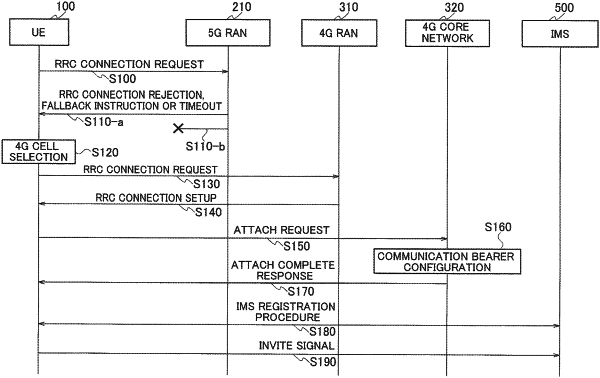| CPC H04W 48/16 (2013.01) [H04W 36/0022 (2013.01); H04W 48/20 (2013.01)] | 9 Claims |

|
1. A user device comprising:
a receiver that, in a state in which the user device is in an IDLE state as a radio connection between the user device and a first system, detects a state that access to the first system is barred in a first cell of the first system, the first system supporting IP multimedia subsystem-type communication service, and the first cell being formed by a first radio access network in the first system;
a processor that selects, without the user device leaving the IDLE state in which the user device has not established the radio connection with the first system, a second cell of a second system as a target cell for connection based on the state detected by the receiver that access to the first system is barred, the second system supporting the IP multimedia subsystem-type communication service, the second cell being formed by a second radio access network in the second system, and the second radio access network being a different type of radio access network from the first radio access network; and
a transmitter that transmits a connection request signal for the IP multimedia subsystem-type communication service to the target cell for connection.
|